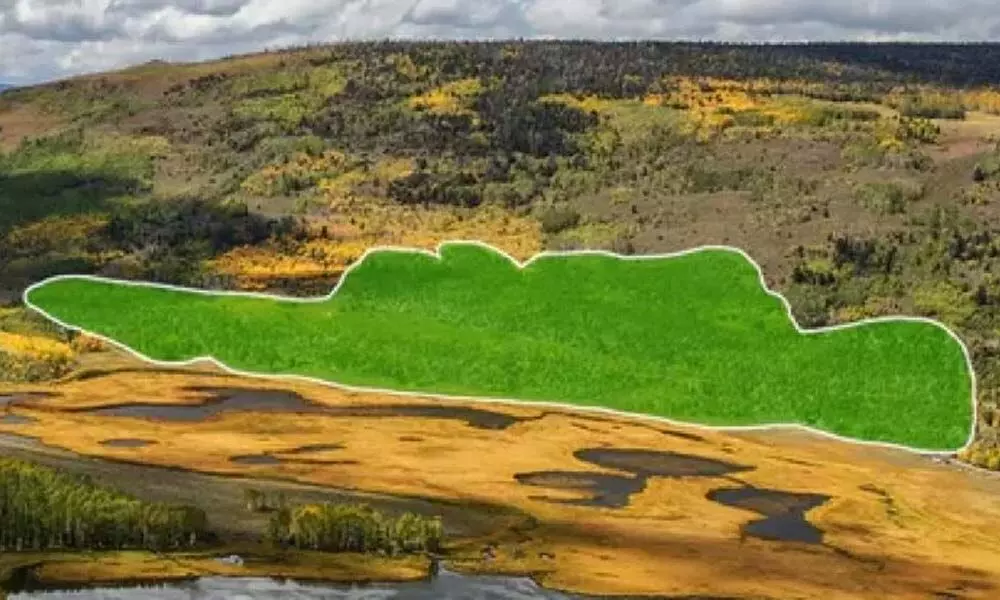Live
- Chanchalguda Jail Officials Say They Haven't Received Bail Papers Yet, Allu Arjun May Stay in Jail Tonight
- BJP leaders present evidence of illegal voters in Delhi, urge EC for swift action
- Exams will not be cancelled: BPSC chairman
- Nagesh Trophy: Karnataka, T.N win in Group A; Bihar, Rajasthan triumph in Group B
- YS Jagan condemns the arrest of Allu Arjun
- Economic and digital corridors to maritime connectivity, India and Italy building vision for future, says Italian Ambassador
- SMAT 2024: Patidar's heroics guide Madhya Pradesh to final after 13 years
- CCPA issues notices to 17 entities for violating direct selling rules
- Mamata expresses satisfaction over speedy conviction in minor girl rape-murder case
- Transparent Survey Process for Indiramma Housing Scheme Directed by District Collector
Just In
Scientists Shows The World's Largest Organism Is Gradually Being Consumed


Scientists Shows The World's Largest Organism Is Gradually Being Consumed
- Pando is actually 47,000 genetically identical stems that originate from an interconnected root network, despite its appearance of woodland of individual trees with dazzling white bark and little leaves that flutter in the slightest breeze.
- Most clonal aspen stands in North America are substantially smaller, averaging about 3 acres in the western United States.
A single enormous creature lives on the slopes above a spring-fed lake in the Wasatch Mountains of western Utah, providing a whole ecosystem on which plants and animals have depended for thousands of years.
'Pando' is a 106-acre stand of quaking aspen clones in the home state of Utah. Pando is actually 47,000 genetically identical stems that originate from an interconnected root network, despite its appearance of woodland of individual trees with dazzling white bark and little leaves that flutter in the slightest breeze. The weight of this single genetic human is estimated to be over 6,000 metric tonnes. It is the world's largest single organism in terms of mass.
While aspen trees do develop clonal stands in other places, Pando is notable for its vast size. Most clonal aspen stands in North America are substantially smaller, averaging about 3 acres in the western United States. One of the most serious concerns is deer and elk overgrazing. Wolves and cougars used to keep herds in control, but the disappearance of these predators has resulted in much larger herds. Deer and elk also concentrate in Pando because the woodland is protected from hunting, thus they are not at risk of being hunted there.
Light enters the woodland floor as older trees die or fall down, stimulating the growth of new clonal stems, but these critters bite the crowns off freshly formed stems, killing them. This means that there is minimal new growth in huge areas of Pando. The only exception is a section of land that was fenced off to remove dying trees a few decades ago. Elk and deer have been kept out of this fenced-in area, which has seen successful regeneration of new clonal stems and dense growth dubbed the 'bamboo garden.'
In Pando, at least three diseases damage older stems: sooty bark canker, leaf spot, and conk fungal disease. Plant diseases have evolved and thrived in aspen stands for millennia, but given the lack of new growth and an ever-growing list of additional stressors on the clonal giant, it's unclear what the long-term effect on the ecosystem will be. Climate change is the most rapidly expanding threat. Pando arose when the previous ice age ended and has enjoyed a very stable climate since then.
Considering the fact that most stems only live for about 130 years, Pando has been around for thousands of years, possibly up to 14,000 years. Regardless of its length and isolation, it has sustained a diverse ecology of 68 plant species and several animals. The aspen's health and uprightness are critical to the ecosystem's survival. Despite the fact that Pando is protected by the US National Forest Service and is not in danger of being cut down, it is endangered owing to a number of other issues.
Despite the fact that no scientific studies have specifically focused on Pando, aspen stands have been struggling with climate change-related pressures such as reduced water supply and warmer weather earlier in the year, making it more difficult for trees to form new leaves, resulting in coverage declines.
Pando will undoubtedly struggle to modify to these fast-changing conditions whereas preserving its size, with more competition for ever-dwindling water resources, temperatures expected to continue soaring to record highs in summer, and the threat of more intense wildfires.

© 2024 Hyderabad Media House Limited/The Hans India. All rights reserved. Powered by hocalwire.com






